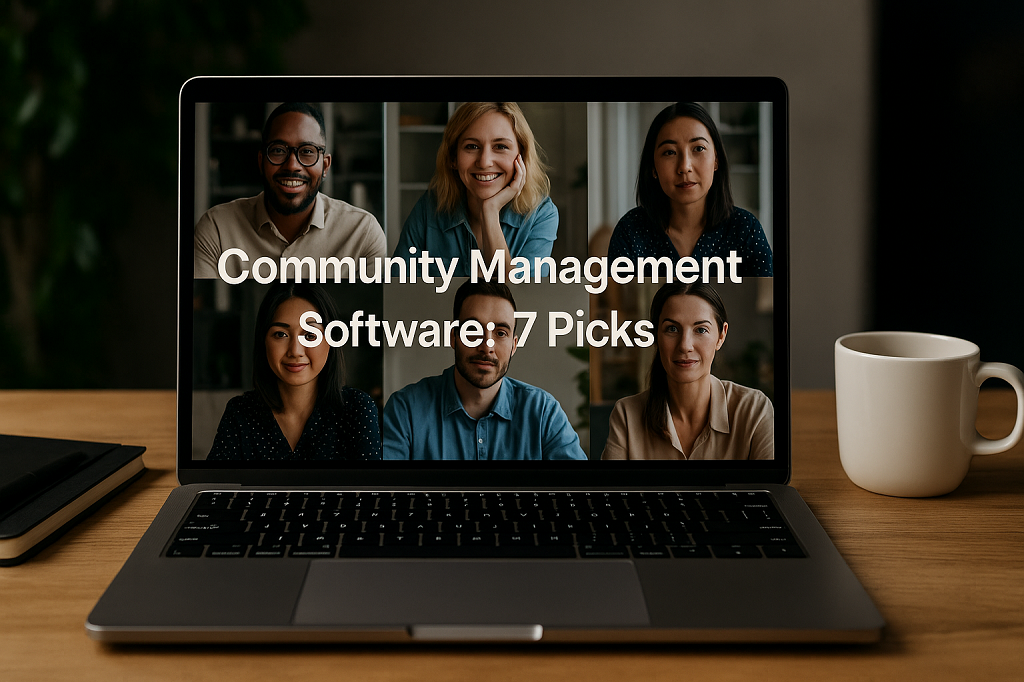
Everyone loves to talk about “community” — but let’s be real. A group chat isn’t a community. A few likes on a post? That’s not engagement. If you’re trying to build something lasting — a space where people actually show up, interact, pay, stay — you need more than a Facebook group or a Discord server.
Community management software isn’t just for big brands. It’s for anyone who’s serious about turning their audience into a tribe. That includes streamers running private shows, educators launching paid groups, adult creators building fanclubs, and wellness coaches managing subscriber-only content. If you’re trying to grow online communities that actually function, you can’t duct tape it together anymore.
This article isn’t fluff. I’ll walk you through 7 real platforms, not just whatever’s trending. We’ll break down what they’re good at, what they’re missing, and who they’re really built for. And when you hit that point where presets and templates don’t cut it anymore — I’ll show you what it looks like to build something fully yours with Scrile Stream.
Let’s skip the buzzwords. You came here for control. Let’s get into it.
What Makes the Best Community Platforms?

Let’s get one thing straight: the best community platforms don’t just look nice — they work. They give creators real tools to manage, grow, and monetize their audience without babysitting every interaction.
At the core, the winners all offer some level of branding control. Your space, your logo, your rules. No awkward third-party links or distracting logos. If it feels like someone else owns the room, your audience feels it too — and trust drops.
Next up? Monetization. Whether it’s subscriptions, tips, gated content, or digital products, good platforms don’t just connect people — they help you earn while doing it. Add support for video, livestreams, member-only posts, and you’re covering all content bases.
Serious creators also need role-based permissions. Mods, VIPs, trial members — not everyone needs the same access. Add analytics to see who’s active, who’s dropping off, and what’s working, and now you’re managing, not guessing.
But the real magic? Retention. The best platforms help you turn casual viewers into superfans — not just once, but over and over. When your audience feels seen and gets real value from your content and interactions, they stick around — and they spend.
That’s what community software should do. It’s not just about “engagement.” It’s about building something that lasts.
Top 7 Community Platforms Worth Your Time
Some tools promise “engagement.” Others actually help you build it. Below are seven platforms that have earned attention — not just for flashy features, but for the way they help real creators, businesses, and online communities scale up and stay connected.
Circle.so – Clean, All-in-One, Creator First

Circle.so made a name for itself by focusing on what creators actually want: clean UX, fast setup, and flexibility that doesn’t require a dev team. It’s one of the best community platforms for building a digital home that looks and feels like your brand — from the logo to the navigation.
Where It Shines:
- Beautiful interface with minimal distractions
- Custom domains and white-label options
- Native integrations with tools like Zapier, Slack, and Notion
- Supports events, courses, live streams, and discussions in one place
Where It’s Limited:
- Monetization isn’t built-in — you’ll need Stripe or Memberstack
- Limited control over backend logic or advanced workflows
- No direct video hosting — you’ll need embeds from other sources
Best For:
- Cohort-based courses, expert-led communities, and online community platforms where structure matters
- Knowledge entrepreneurs and indie brands looking for polish without the tech headache
Circle.so keeps things simple but effective. It won’t do everything, but what it does — it does smoothly.
Mighty Networks – Big Vision for Bold Brands

If you’ve ever wished you could launch your own Facebook — but without the ads, the noise, and the algorithm meddling — this is the community platform that gets you closest. Mighty Networks is built for people with a vision: educators, influencers, coaches, and lifestyle brands that want a real digital ecosystem, not just a group chat.
Where It Shines:
- Multi-level spaces (great for organizing large online communities)
- In-app live streaming, group chats, events, and course tools
- Branded mobile apps included, even on lower-tier plans
- Supports native payments for memberships, bundles, and offers
Where It’s Limited:
- The pricing structure can climb fast as your user base grows
- Some users report a steep learning curve with advanced features
- No full control over data or infrastructure — it’s still someone else’s sandbox
Best For:
- Growing online community platforms that want to host everything under one roof — content, events, and monetization
- Creators with a strong brand who need mobile-first functionality
- Coaches and community leaders running paid memberships or transformations
If Circle.so is minimalism, Mighty is maximalism. It’s one of the best community platforms if you’re serious about scaling and ready to invest in an all-in-one experience that feels like your own.
Kajabi – Content Meets Commerce
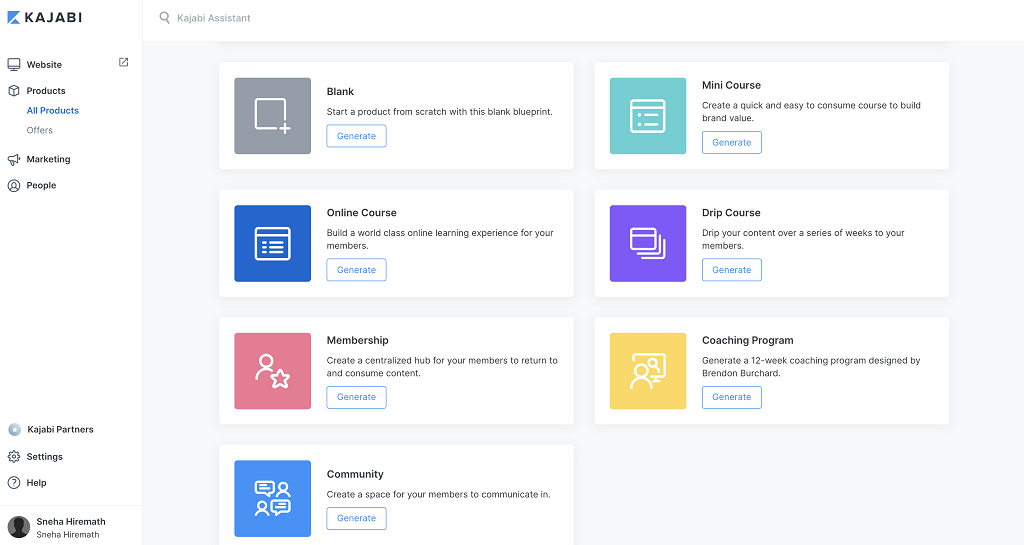
Kajabi isn’t just another place to post content — it’s a full business engine wrapped in sleek UX. If your community strategy is built on courses, coaching, or high-ticket funnels, Kajabi delivers tools that connect education with monetization. Think landing pages, upsells, webinars, and email flows — all without duct-taping ten different apps together.
Where It Shines:
- Seamless product creation — courses, coaching programs, and digital downloads
- Built-in email marketing and automation tools
- Full control over pricing, upsells, and customer journeys
- A clean and professional dashboard your users will trust instantly
Where It’s Limited:
- Community features are functional, but not exactly vibrant — more structured than social
- Limited real-time engagement like live chat or group threads
- Feels more like a storefront with a comments section than a living, breathing community
Best For:
- Coaches, experts, and course creators who monetize through structure and funnels
- Entrepreneurs looking to centralize their digital products and audience-building
- Solo brands who want a controlled, branded environment without coding
Kajabi may not be the warmest space for spontaneous interaction, but as a community management software, it’s incredibly effective at turning knowledge into cash — and keeping users inside your content loop.
GroupApp – Simpler Doesn’t Mean Weaker
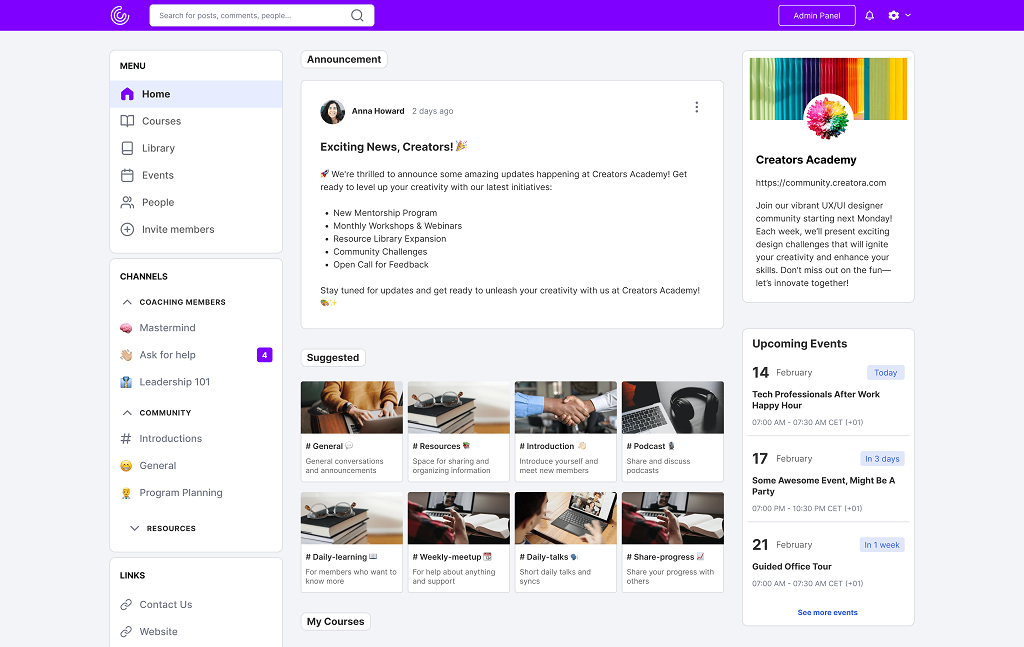
GroupApp strips community management down to the essentials — and for a lot of early-stage creators, that’s exactly what works. You get a private space for your audience, gated content, email list tools, and a distraction-free interface that doesn’t try to be everything at once.
Where It Shines:
- Super fast setup and no bloat
- Custom domains and email integrations
- Clean UI for mobile and desktop
- Affordable even for creators just starting out
Where It’s Limited:
- No complex structure — forget subgroups, roles, or layered permissions
- Limited customization in layout or user experience
- Doesn’t support built-in livestreams or advanced analytics
Best For:
- Bootstrapped educators launching their first community space
- Creators who want to drip content behind a paywall without fuss
- Webcam performers testing pay-to-access groups before scaling
GroupApp proves that community management software doesn’t have to be massive to be meaningful. If you value simplicity over scale, and authenticity over automation, this might be your ideal launchpad.
Swarm.to – Video-Centric and Minimalist
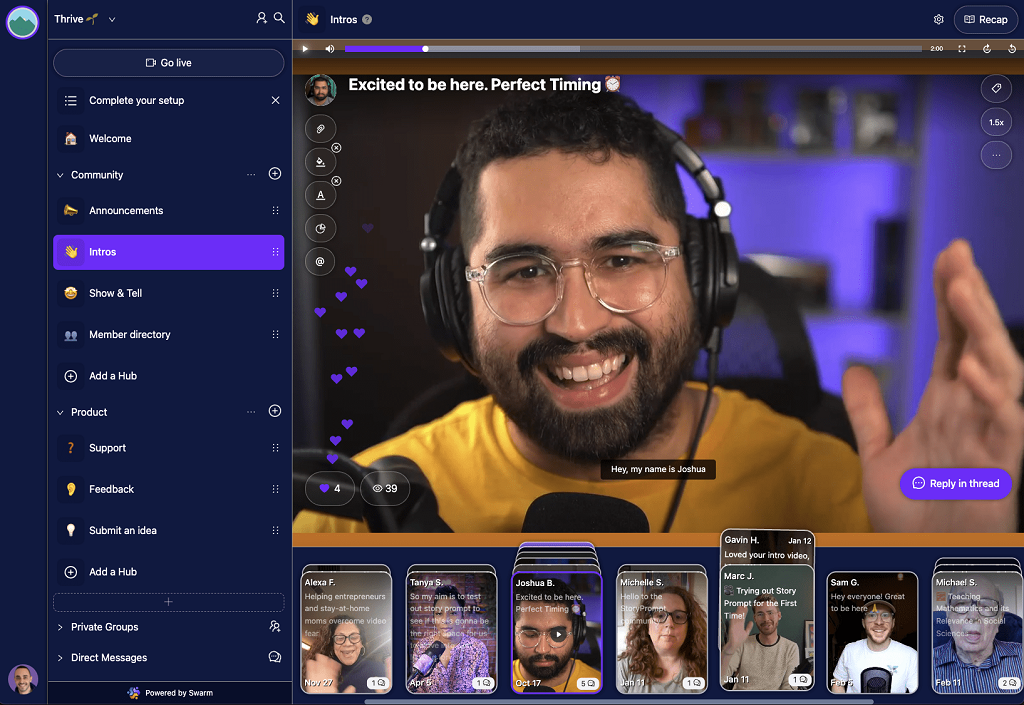
Swarm.to wasn’t built to compete with Facebook Groups. It was built for people who want live video conversations, not text threads. That’s its entire philosophy — and for many streamers, performers, and solo brands, it hits the mark.
Where It Shines:
- Smooth, low-latency group video chats
- Simple room-based UX — jump in and go live
- Works well on mobile and desktop with no app needed
- Ideal for Q&As, AMAs, or fan check-ins
Where It’s Limited:
- No traditional posting feed or content archives
- Few customization options — branding is light
- Doesn’t offer robust monetization or analytics
Best For:
- Streamers who want an off-platform space for real-time interaction
- Adult creators offering intimate video events or exclusive hangouts
- Anyone running a tight, video-first online community
Swarm.to won’t help you build a vast content library or SEO funnel — but it wasn’t meant to. It’s a community management software made for faces, voices, and moments, not modules and menus. Sometimes that’s all you really need.
Khoros – Enterprise Powerhouse
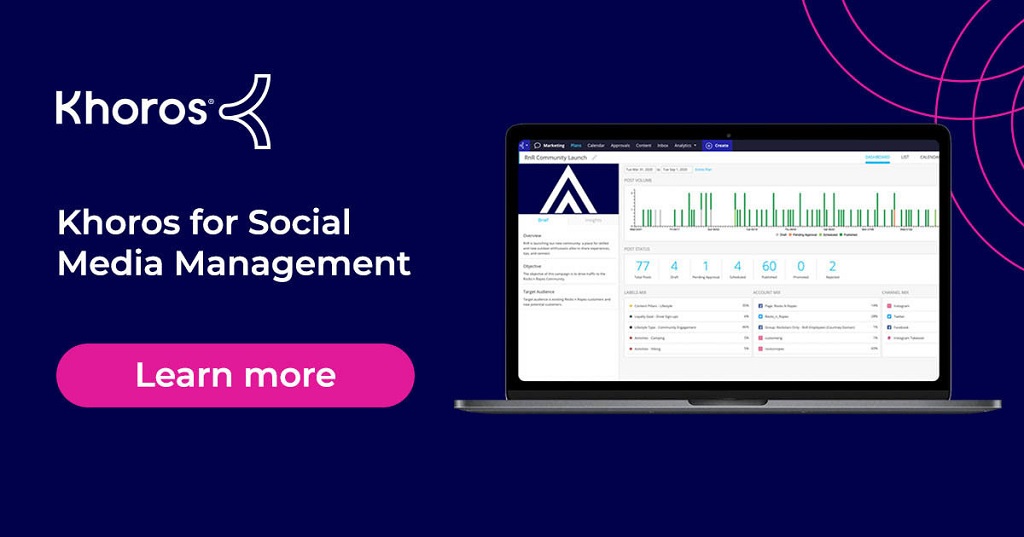
Khoros isn’t here to play — it’s enterprise-grade community management software used by some of the biggest brands on the planet. Think Samsung, HP, and PayPal. It’s packed with automation tools, moderation workflows, sentiment tracking, and deep analytics — the kind of stuff most smaller teams won’t even know how to use at first.
Where It Shines:
- Built-in moderation tools with AI tagging and spam controls
- Detailed reporting dashboards for engagement, support, and ROI
- Integrated with CRM systems, chatbots, and help desks
- Supports both support forums and branded social communities
Where It’s Limited:
- Hefty pricing with multi-year enterprise contracts
- Overkill for creators or midsize teams — complex onboarding
- Limited flexibility for non-corporate, fan-driven formats
Best For:
- Agencies managing multiple brands and audience segments
- Global adult content platforms with multilingual support needs
- Enterprises building loyalty programs and customer hubs
Khoros isn’t for casual creators or small communities. But if you’re already operating at scale and need a full-blown, enterprise-ready community management software that checks every compliance and analytics box — this is the big leagues.
StoryPrompt – Personality-Driven Engagement
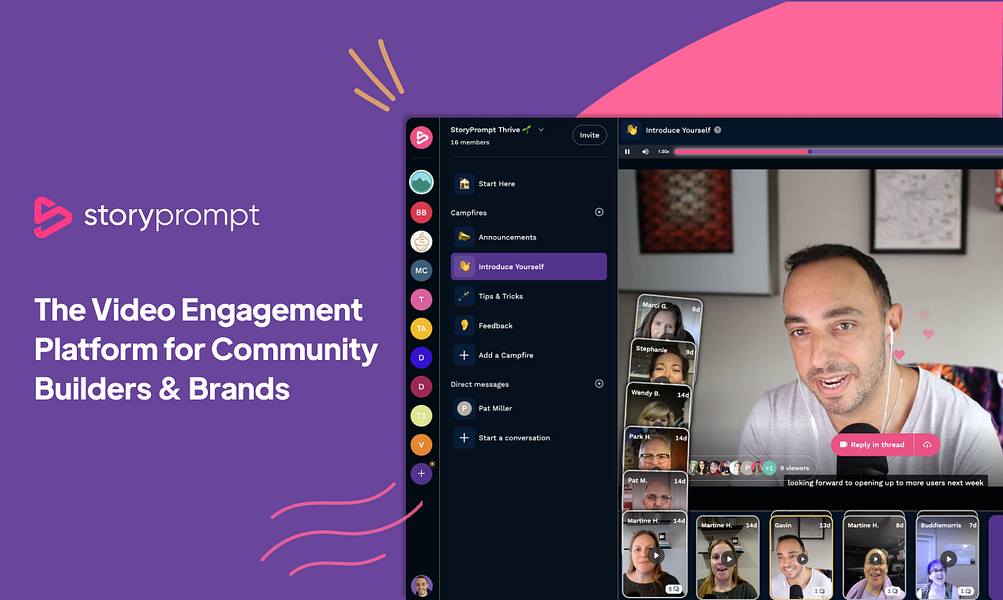
StoryPrompt flips the usual community dynamic on its head. Instead of endless text posts and lifeless threads, this platform builds engagement around video-first communication — think async video prompts, selfie-style replies, and creative audio threads that feel like voice notes, not message boards.
Where It Shines:
- Video and audio responses as the primary mode of interaction
- Clean, mobile-first design that actually encourages participation
- Strong focus on personality and authentic connection
- Great for icebreakers, live storytelling, or cohort-based coaching
Where It’s Limited:
- Lacks text-based features like longform posting or search threads
- Not ideal for evergreen content or large archive libraries
- Limited third-party integrations and monetization tools
Best For:
- Coaches or mentors who want to create deep personal connections
- Creators tired of lifeless Discord or Slack groups
- Adult professionals focused on premium fan interaction, not passive viewers
If traditional community management software feels cold or rigid, StoryPrompt brings back the human element. It’s for leaders and storytellers who want faces, voices, and warmth — not just forums and feeds.
Table: Comparing the 7 Platforms at a Glance
| Platform | Monetization | Custom Branding | Video Support | Best Use Case | Price Flexibility |
| Circle.so | ✅ | ✅ | ⚠️ | Educators, creators | Medium |
| Mighty Networks | ✅ | ✅ | ✅ | Lifestyle brands | Low–Medium |
| Kajabi | ✅ | ⚠️ | ✅ | Course creators | Medium–High |
| GroupApp | ⚠️ | ✅ | ⚠️ | Small creator communities | High |
| Swarm.to | ✅ | ✅ | ✅ | Video meetups | Medium |
| Khoros | ✅ | ✅ | ✅ | Enterprise brands | Low |
| StoryPrompt | ⚠️ | ✅ | ✅ | Coaches, async creators | High |
When Pre-Built Isn’t Enough: Scrile Stream as a Custom Community Solution
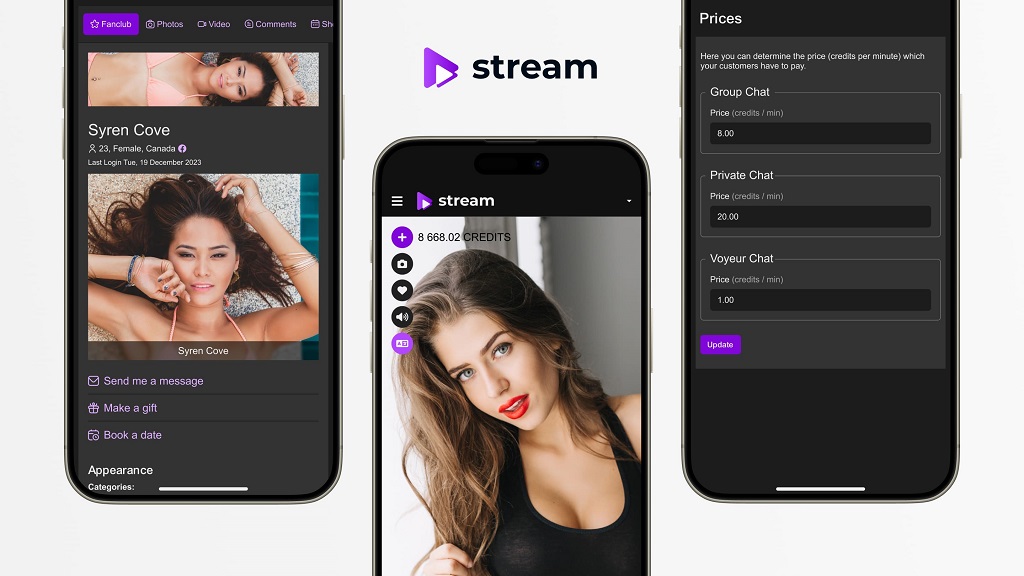
Sometimes the options on the shelf just don’t cut it. You’ve tried the platforms with monthly fees and cookie-cutter templates. You’ve hacked together Discord groups and paywall plugins. But what if you need something that’s actually yours?
That’s where Scrile Stream comes in. It’s not just another piece of community management software — it’s a full-scale development service for building your own community ecosystem from the ground up.
Instead of working around someone else’s limitations, you define the rules. Want a sleek streaming interface with live chat and real-time reactions? Done. Need a gated video library with subscription tiers and custom access logic? Easy. Looking to run private fanclubs, enable tipping, sell exclusive video content, or set your own payment terms? Scrile Stream makes all of that happen — under your brand, on your domain, with your user data in your hands.
It’s the difference between renting space and owning the building.
Scrile’s team doesn’t offer templates. We collaborate. You bring the vision — maybe it’s a coaching community with weekly webinars and Q&A drop-ins, or a niche fitness network with member-led clubs and badge systems. Whatever the concept, we’ll help you shape it into a fully functioning product that feels personal, polished, and scalable.
So if you’ve outgrown platforms that weren’t built for what you’re building, this is your signal. Scrile Stream gives you full creative and business control — without forcing you to become a developer yourself.
Conclusion: Own Your Audience, Own Your Growth
There’s no shortage of great tools out there. The best community platforms can help you find your footing and grow fast — but they all come with trade-offs. Some limit how you monetize. Others dictate how your brand shows up. And almost none give you full control over your audience relationships.
That’s why going custom isn’t just a technical decision — it’s a business move.
If you’re ready to stop renting space in someone else’s digital world, it might be time to build your own. Scrile Stream isn’t a platform — it’s a partner. Whether you’re launching a coaching network, a video-first space, or something the market hasn’t seen yet, their team will help you shape the tools around your goals.
Want to own your community — and your future? Start by talking to Scrile Stream today.
FAQ
What is a community management system?
Short answer: community management software that lets you moderate, grow, and organize audience engagement on your terms. From comments and memberships to video events, it’s the backbone of sustainable online communities.
What is the best community building app?
It depends on your needs. Circle.so and Mighty Networks are strong all-in-ones. Kajabi works great if you’re selling courses. GroupApp is ideal for early-stage communities. Swarm.to fits video-heavy brands. Coaches love StoryPrompt. Bigger orgs? Look at Khoros.
What do you mean by ACC management?
Account management (ACC) usually refers to handling client relationships. In the context of community platforms, it means nurturing user relationships, managing access, and using tools like billing, messaging, and content controls to grow retention and revenue.


I just wanted to express my gratitude for the valuable insights you provide through your blog. Your expertise shines through in every word, and I’m grateful for the opportunity to learn from you.
I have been browsing on-line greater than 3 hours these days, yet I by no means discovered any interesting article like yours. It is pretty worth enough for me. In my view, if all site owners and bloggers made excellent content as you did, the web will probably be a lot more helpful than ever before. “No nation was ever ruined by trade.” by Benjamin Franklin.